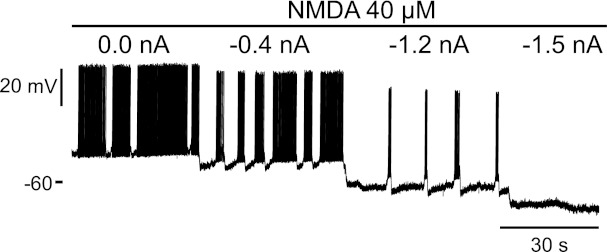Fig. 3.

Effect of hyperpolarization on the NMDA-induced bursts. Intracellular recording was from a mouse motoneuron. On continuous bath application of NMDA 40 μM (top line), this motoneuron was driven to more and more hyperpolarized potentials with a bias current (intensity written on top of the trace). As the motoneuron got more and more hyperpolarized, the frequency and duration of the bursts decreased, and they even stopped completely at −1.5 nA of bias current.
